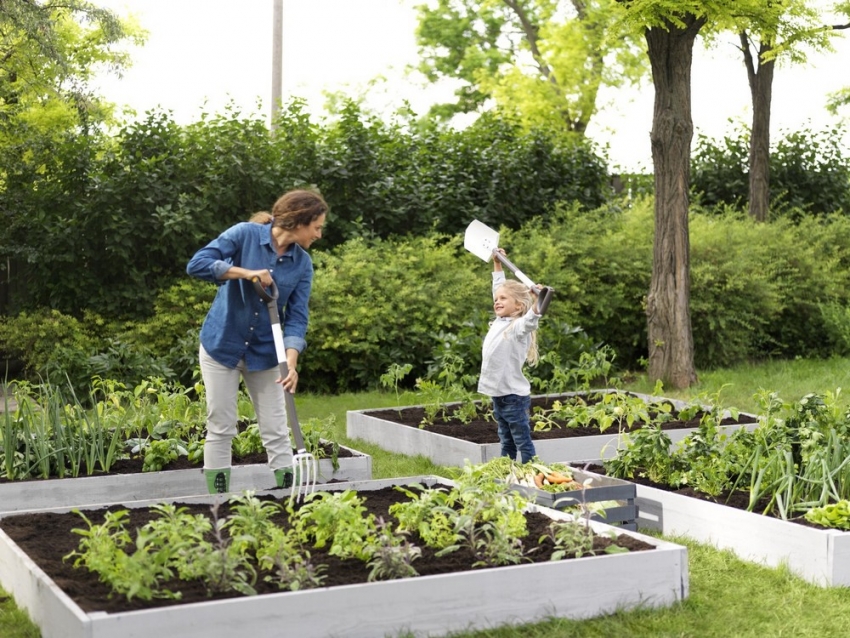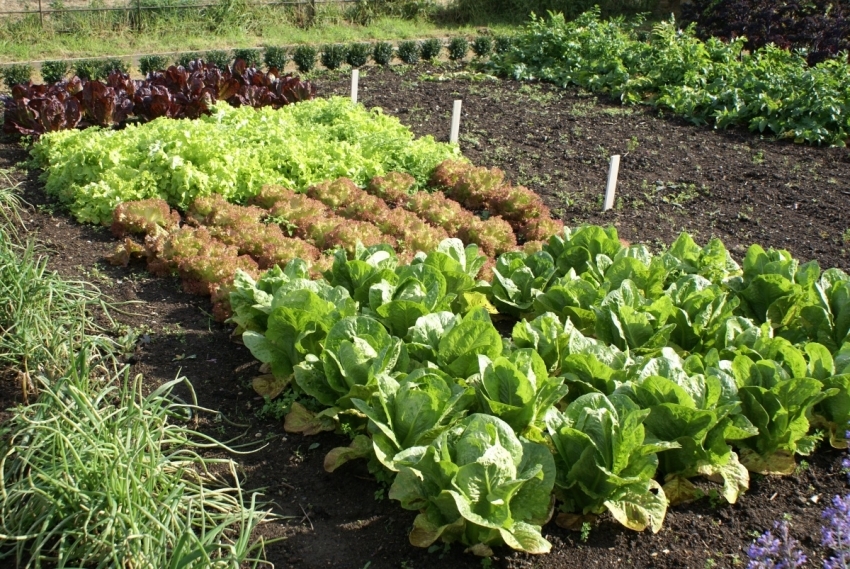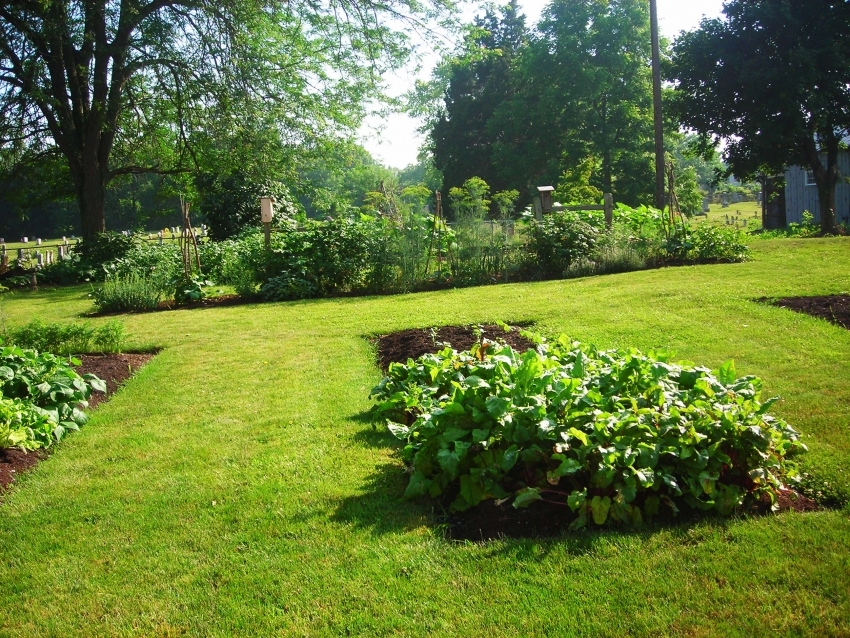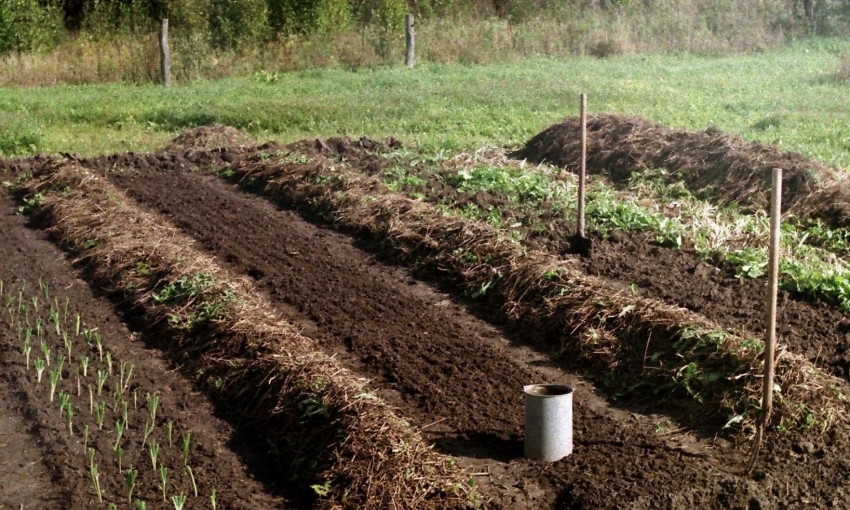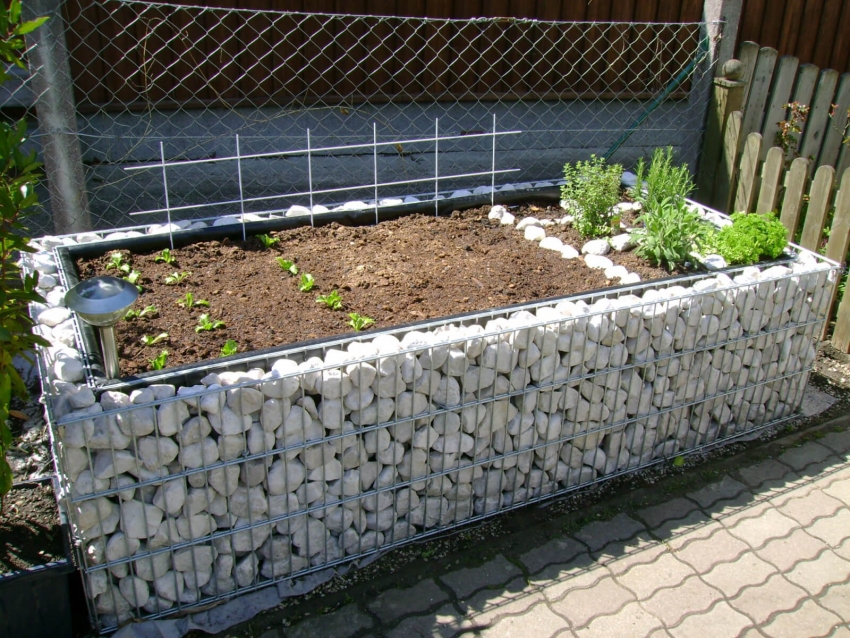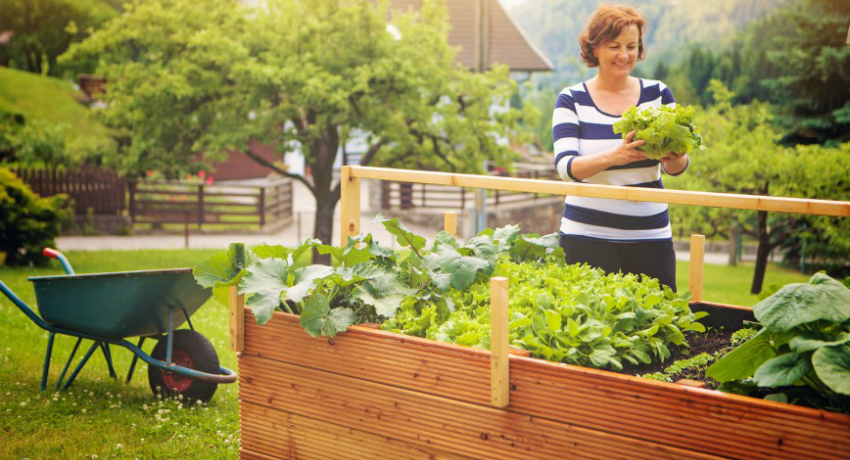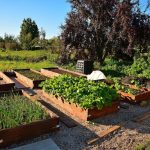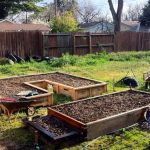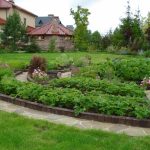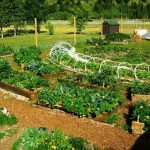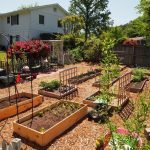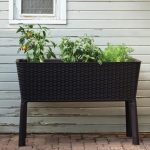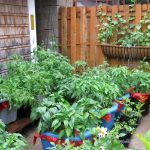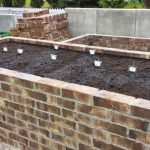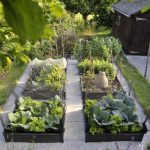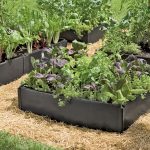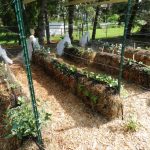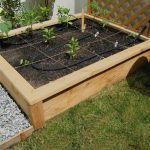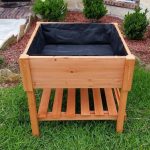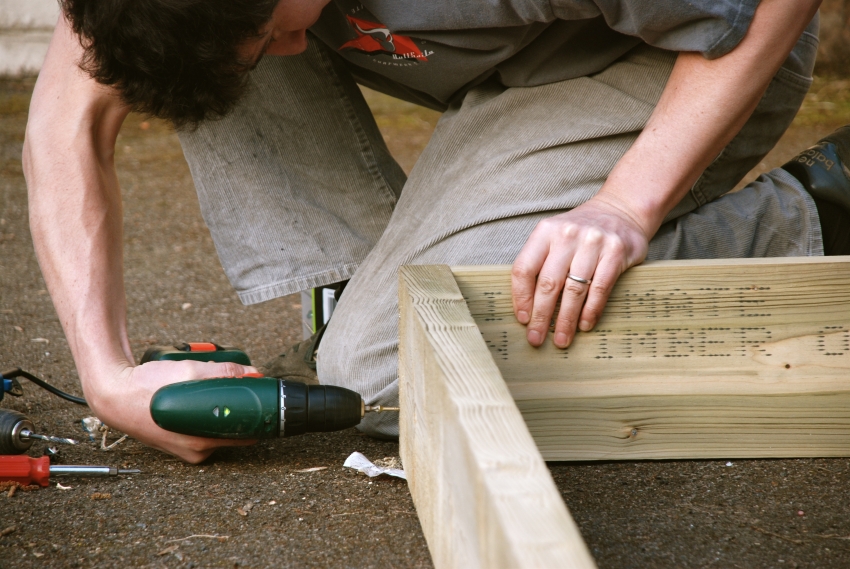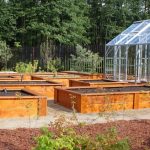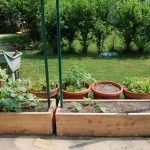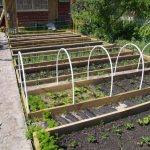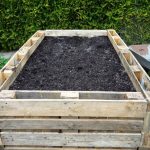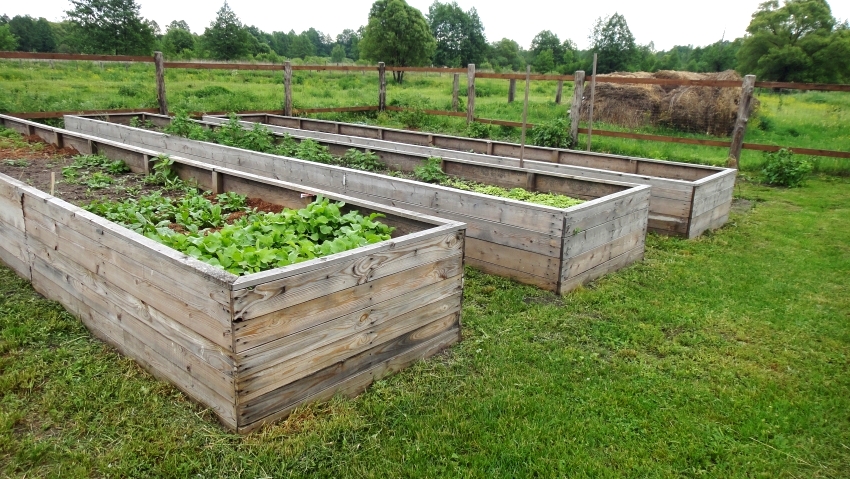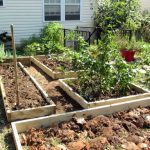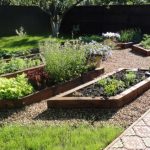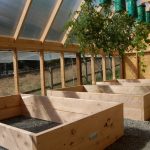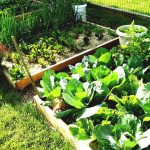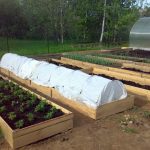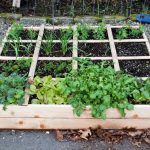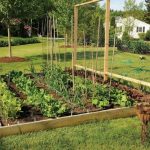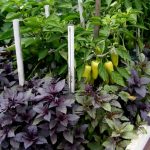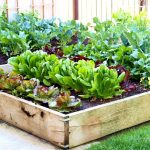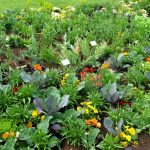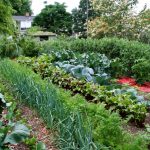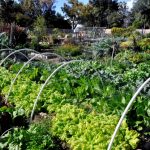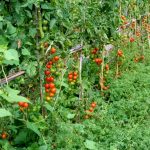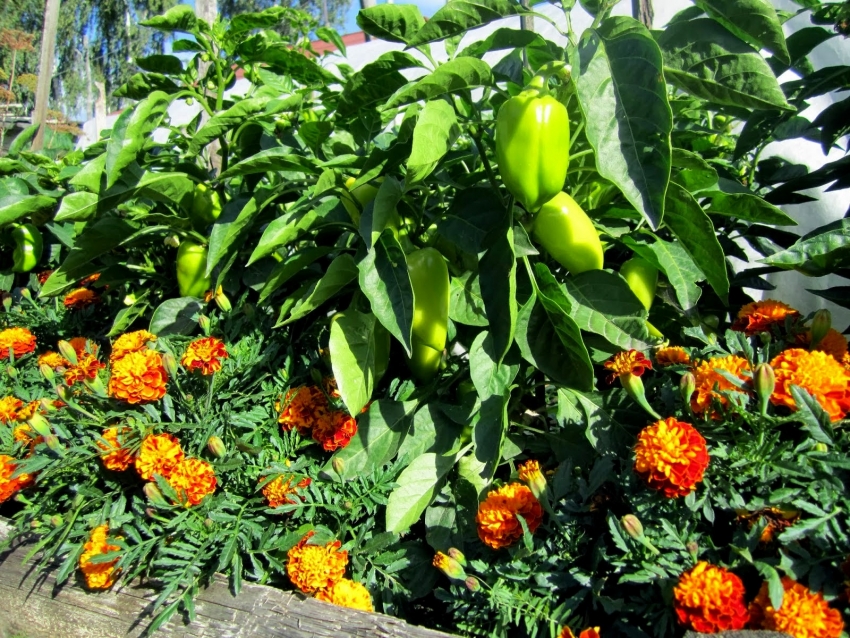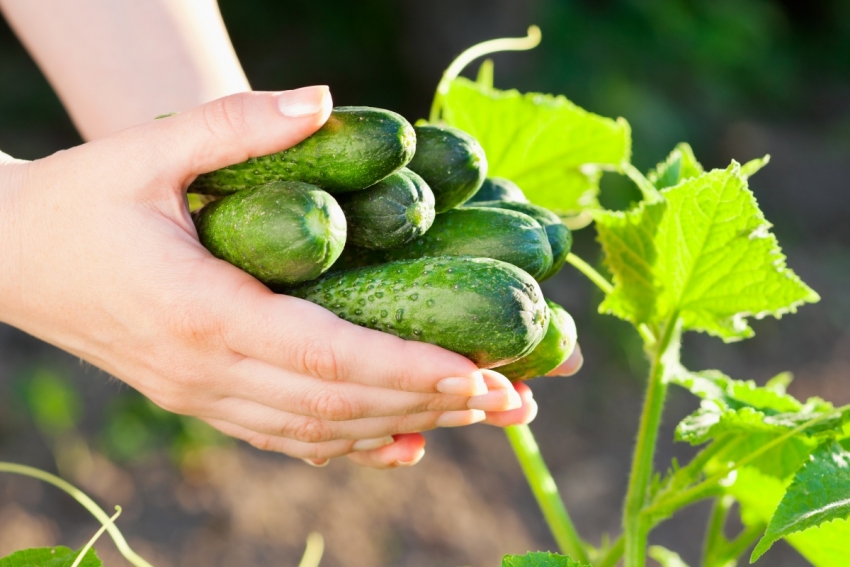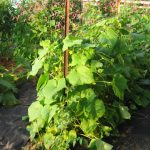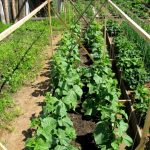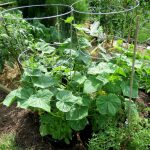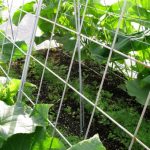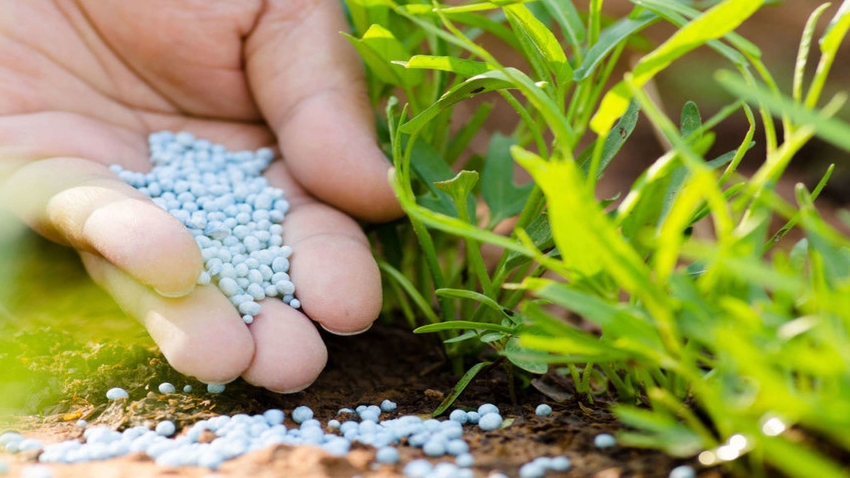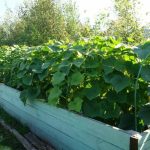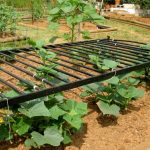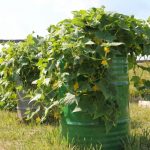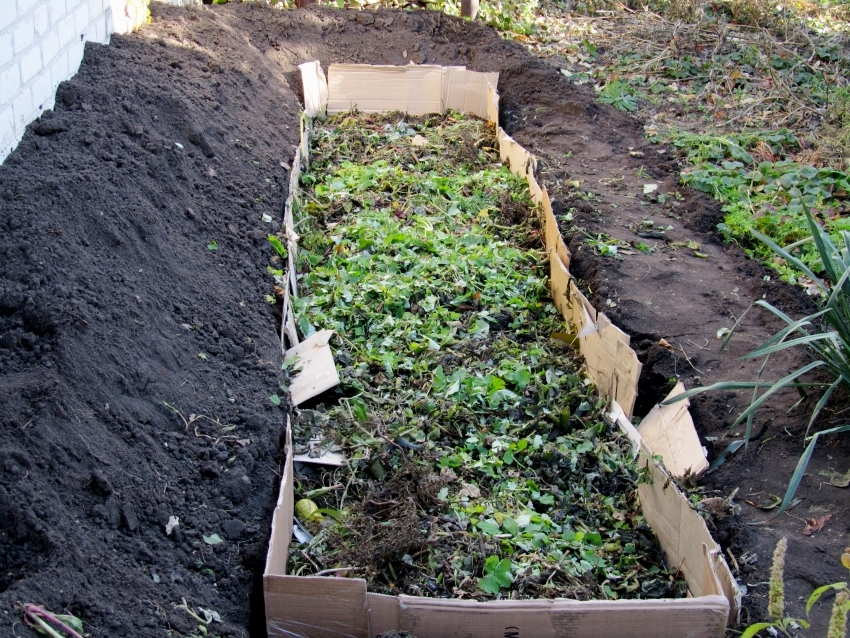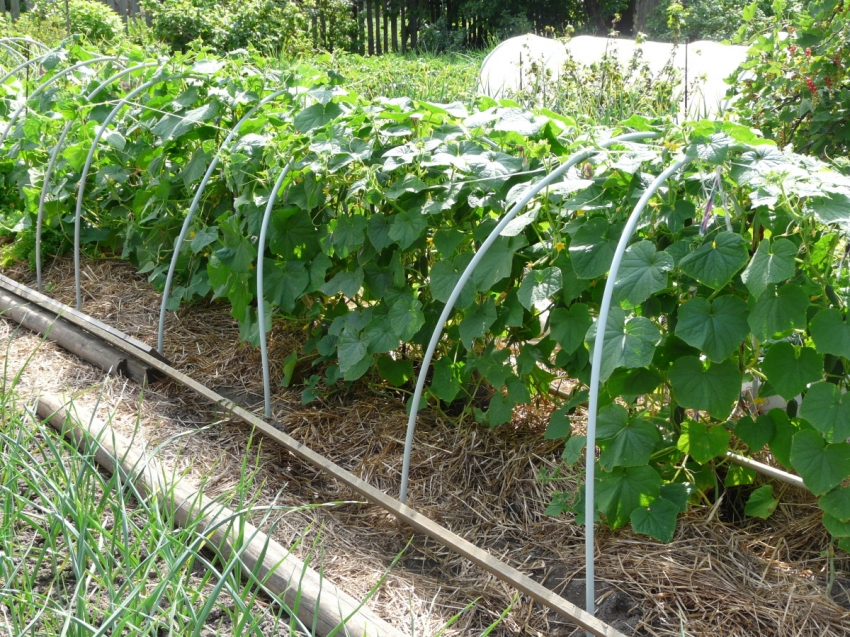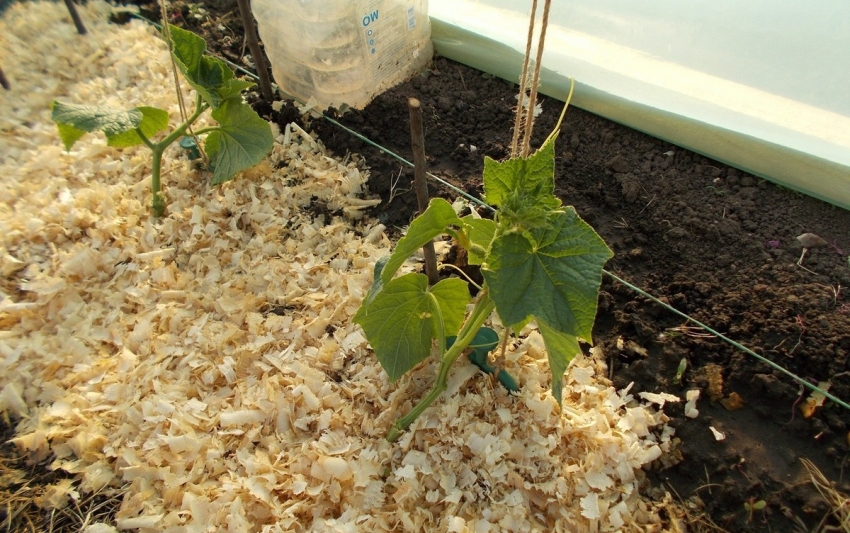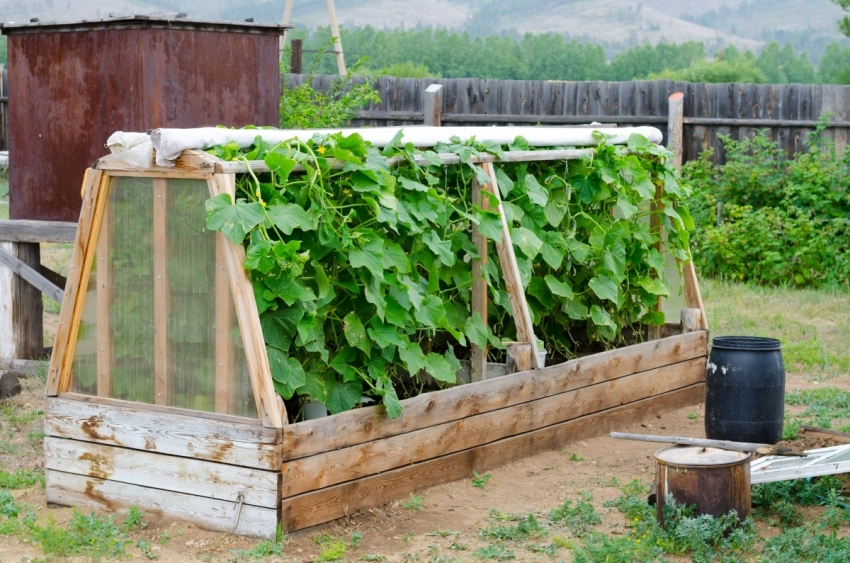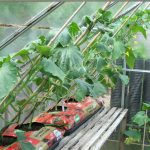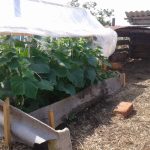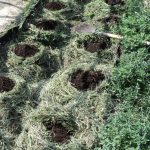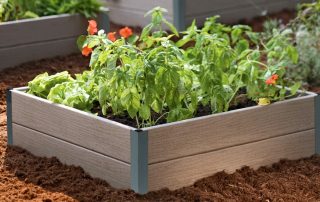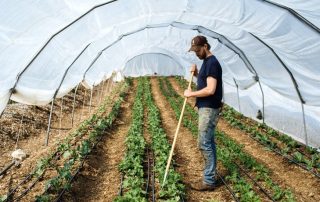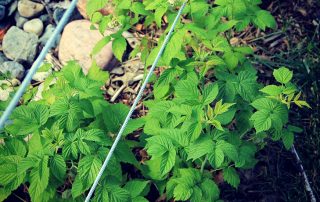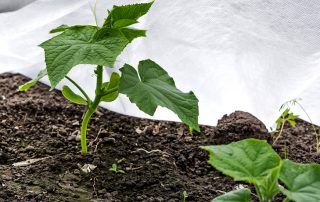This article discusses beds for the lazy: photos of the easiest structures to make for those who want to get a neat garden with a minimum of effort, the most common materials and technologies for creating structures based on them. The reader will learn how to combine vegetable crops on the same bed and prepare the soil for planting cucumbers. The article contains practical recommendations for novice summer residents.
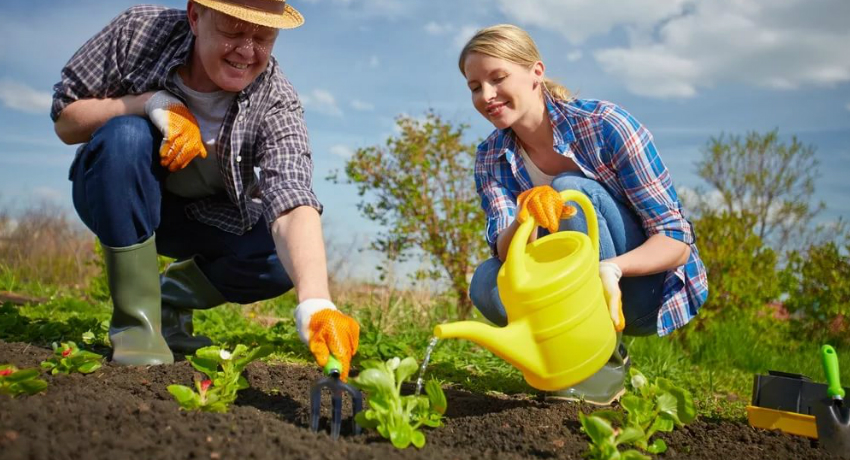
The correct organization of the beds in the garden will help save time and effort when planting and harvesting
Content [Hide]
- 1 Beds for the lazy: photos and basic information for novice summer residents
- 1.1 Varieties of beds in the garden: how to properly prepare for construction
- 1.2 Creating beds with your own hands from scrap materials: photos of tall structures
- 1.3 How to arrange the beds in the garden: photos and recommendations for choosing a place
- 1.4 How best to make beds in the garden: choosing the optimal design
- 2 How to make beds from boards with your own hands: useful tips
- 3 Creating mixed plantings of vegetables in the garden: photo examples and optimal schemes
- 4 Arrangement of beds for cucumbers in the open field: photos and recommendations
Beds for the lazy: photos and basic information for novice summer residents
Designing the right beds in the garden will solve many problems and open up new opportunities for the owner of a summer cottage:
- protection against soil erosion in the garden in the event of a large amount of precipitation or watering plants. The sides of the bed will keep the nutrient soil in place, preventing it from being washed into the paths. In addition, the very passages between the structures will remain clean, no dirty puddles and drips;
- the possibility of forming a basis for the creation of a temporary greenhouse for the spring. By installing high sides as fences, inside the structure, you can organize a multi-layer bed, which can be used as a greenhouse. To do this, it is enough to install special arcs and stretch the film. The result is a neat greenhouse house;
- improving the appearance of the garden due to orderly and even plantings with a beautiful frame;
- creating boundaries that prevent the spread of weeds.
Making beds from boards and other materials with your own hands allows you to clearly limit the planting area, thanks to which weeds and harmful plants do not have the opportunity to spread widely. If the garden fence is dug to a great depth, the level of protection increases and perennial weeds that are unable to overcome this obstacle can no longer penetrate into the garden.
Note! With the help of beds with well-buried fences, the spread of plants such as reeds and creeping wheatgrass is effectively blocked. Their root system is capable of covering long distances underground if unrestricted.
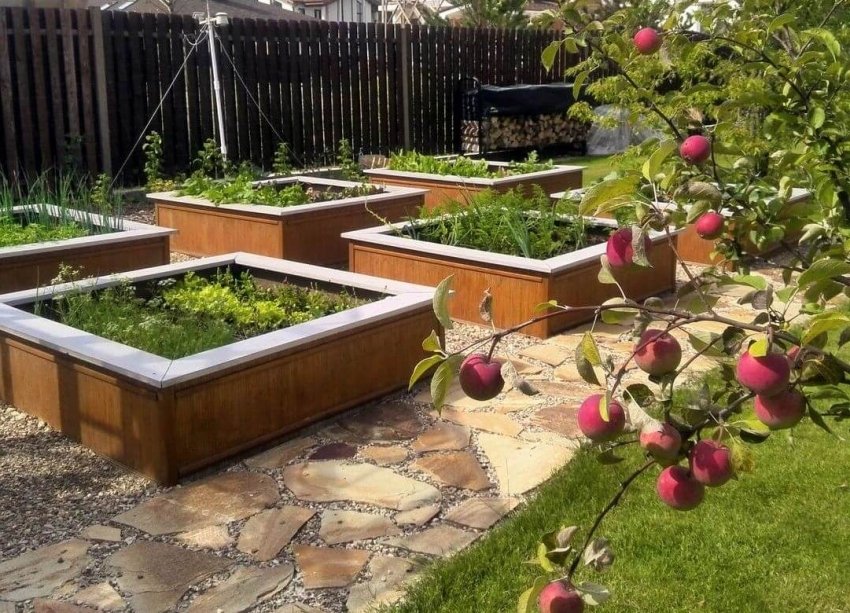
High warm beds made of quality materials, can serve the owners for many years
Varieties of beds in the garden: how to properly prepare for construction
To organize a garden, several types of beds are used:
- standard;
- high;
- narrow.
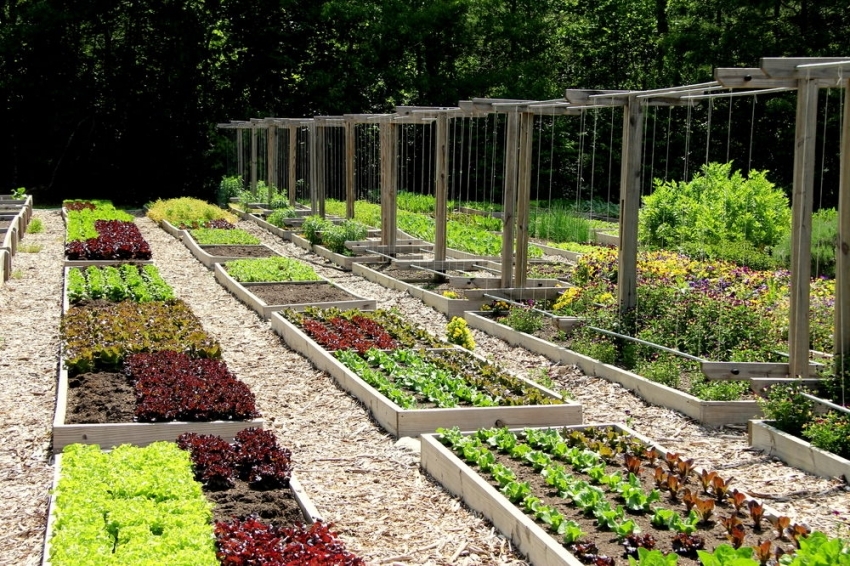
Wide paths and an optimal bed size will allow you not to step on the ground when working with plants
Standard beds are on the same level as the garden, they do not go deep into the ground and do not protrude above it. At the same time, the owner of the territory can independently choose the width, length and nature of the arrangement of the beds in the summer cottage, photos of interesting design options can be seen in this article. As a rule, plantings are placed at a distance of no more than 0.5 m from each other, so that the plants are easier to care for. It is recommended to use a rope stretched between the pegs to mark the area. The use of a special garden marker is allowed.
Before you start making a bed with a narrow structure, you should make sure that the building area has a flat surface and a sufficient level of lighting. This type of product is characterized by increased row spacing. This parameter can sometimes reach 1 m. Moreover, the beds themselves do not exceed 0.45 m in width. The structures of narrow beds rise slightly above the soil level. The difference between the height of the garden and the surface of the plot is 0.2 m.
In the zone where the construction of the beds is planned, the soil should be dug up and fertilized. At the same time, you should not waste nutritional supplements on the aisles, you only need to process the planting site. Dolomite flour or a special complex consisting of mineral substances can be used as fertilizers.
Interesting fact!Narrow structures are also called Mittlider beds (in honor of the person who invented the technology for their manufacture). According to the agronomist, the garden will bring a good harvest if you carry out regular watering plants and make nutritious mixtures of industrial production. And he, on the contrary, did not recommend using compost and manure.
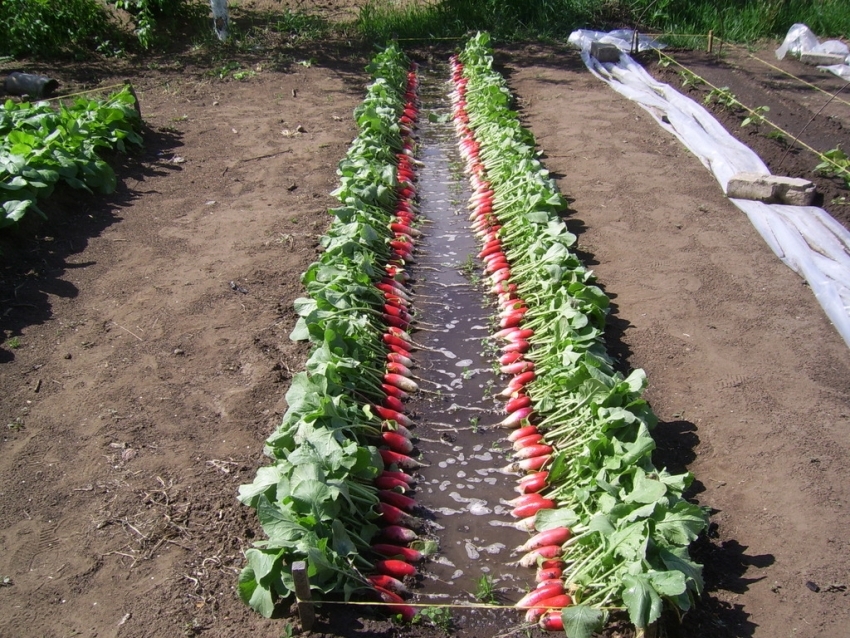
Narrow beds according to the Mittlider method, due to the large amount of light received, give a good harvest
Creating beds with your own hands from scrap materials: photos of tall structures
Any summer resident first of all decides what to make the beds in the garden from, and only then proceeds to further planning and construction, since the technology of their creation depends on the physical and operational parameters of the material. Regardless of its choice, the mechanism for making structures is almost always the same. Construction begins with the installation of the frame. The standard size of such structures is 0.9 m (width) and 1.2 m (length). After that, the product is filled with fertile soil.
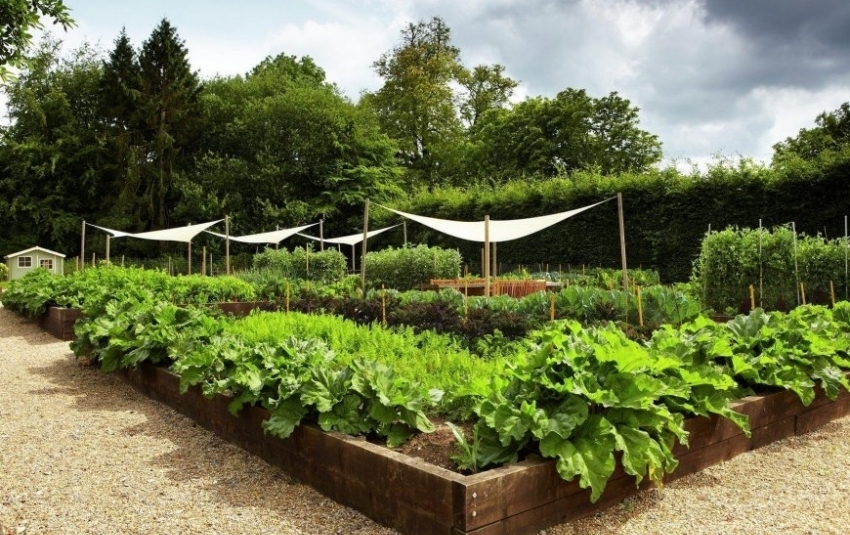
Garden beds made of quality wood are more environmentally friendly compared to concrete or asbestos-cement
The designs of self-made beds from scrap materials can be created on the basis of:
- Stone or brick - products made from these materials look aesthetically pleasing, while they are characterized by a long service life. The disadvantages of stone or brick frames include their cost. In addition, the assembly procedure is time-consuming, and dismantling a stationary structure can be difficult.
- Vines are the most readily available material found in nature. Due to the flexibility, the beds can be given any shape, but the service life of such a structure is limited to a short period of time. In addition, you will need to carefully study the weaving technique and acquire a special tool for cutting branches.
- Metal - the material allows you to create lightweight portable structures that can be painted in any color. However, the cost of such a frame is high, and the operation may require a welding machine and skills in handling it. Products also need anti-corrosion protection.
- Slate is a relatively inexpensive material that provides easy assembly of the structure, but requires utmost care due to its fragility.
How to arrange the beds in the garden: photos and recommendations for choosing a place
Of no small importance in obtaining a rich harvest is the correct choice of a place for the construction of beds and a scheme for their placement. It is desirable that the area chosen for the organization of the garden be flat and as much as possible illuminated by the sun throughout the day.
Note! Most plants need a lot of sunlight. A little darkening will be helpful in the afternoon.
To make the right choice of a place for organizing a vegetable garden, it is recommended to spend some time on the site and observe the distribution of light throughout the territory throughout the day. In addition, special attention should be paid to the placement of trees, both on your site and on the territory of neighbors. This is necessary in order to determine how large the shadow is and where it falls. It should be borne in mind that a plot bathed in sun in winter can be shaded in summer, since thick foliage appears on the bushes and trees in the warm season.
Related article:
Do-it-yourself beautiful garden beds in the country: photo examples and unusual solutions
Photos of interesting designs of beds, recommendations for their creation. Tips for designing an unusual landscape design on the site.
The best place is the area where the sun is present all day long. It is allowed to install beds where shadow is present in the morning or afternoon. If the proposed construction zone is darkened throughout the day, you should not use this place for arranging a vegetable garden.
How best to make beds in the garden: choosing the optimal design
The choice of the design of the beds is carried out at an early stage of planning, when a place for the garden has already been selected.
Each type of garden bed has certain advantages:
- raised or high beds - the most efficient designs that are best suited for growing vegetables. The building materials for their creation are not very expensive, and the soil does not need to be dug up. The width and height of the structures depends on how much effort and time it will take to build them. Most often, summer residents prefer wooden beds made of boards. On the network, you can find photos of bulk beds with your own hands, such structures do not have a fence. They are also classified as raised structures;
- container beds - will be beneficial in cases where the space of the site is limited. Small, large and medium-sized pots are suitable for organizing such beds. Garlic, pepper, lettuce and herbs feel especially good in containers. Mobility is another advantage of container beds, which, if desired, can be rearranged to any place;
- open field beds are the oldest method of growing crops that are planted directly into the ground. In such conditions, it is more difficult to get a good harvest, therefore, the technology of joint planting of vegetables in the garden is often used.
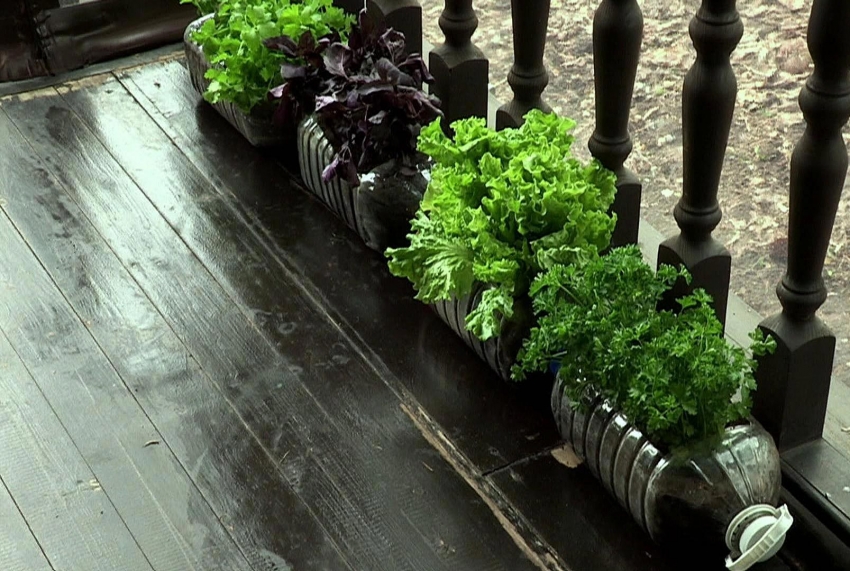
Annual plants can be grown in large plastic bottles and placed in a convenient location for the site
Useful advice!If you plan to plant crops in the open field, it is recommended to determine the quality of the soil, fertilize it and check the compatibility of vegetables in the garden according to the table.
How to make beds from boards with your own hands: useful tips
Most often, raised beds are made of wood. This material, in comparison with others, is considered the most practical and environmentally friendly. Such designs look very aesthetically pleasing in the photo. Do-it-yourself board beds have other advantages:
- simple maintenance system, assuming easy weeding, harvesting and watering of plants;
- the possibility of growing vegetables even where the soil is completely unsuitable for these purposes. On the basis of the boards, a frame is made, which is subsequently filled with fertile soil purchased in the store, so there is no reference to the quality of the earth and its composition. Thanks to this, plants can be grown even in areas with a rocky surface;
- box structures allow you to keep the soil inside the garden bed. In addition, the presence of sides simplifies the process of installing arcs to form a greenhouse. Fixing these elements to the fence is much easier than digging them into the soil;
- even without knowing how to properly make the beds in the garden, any summer resident will cope with the manufacture of wooden structures-boxes. The boards are easy to process, and expensive tools are not required for the construction and assembly of the frame;
- there is no likelihood that plants planted near the sides will get burned in the summer heat. Wood, unlike metal, is not prone to overheating.
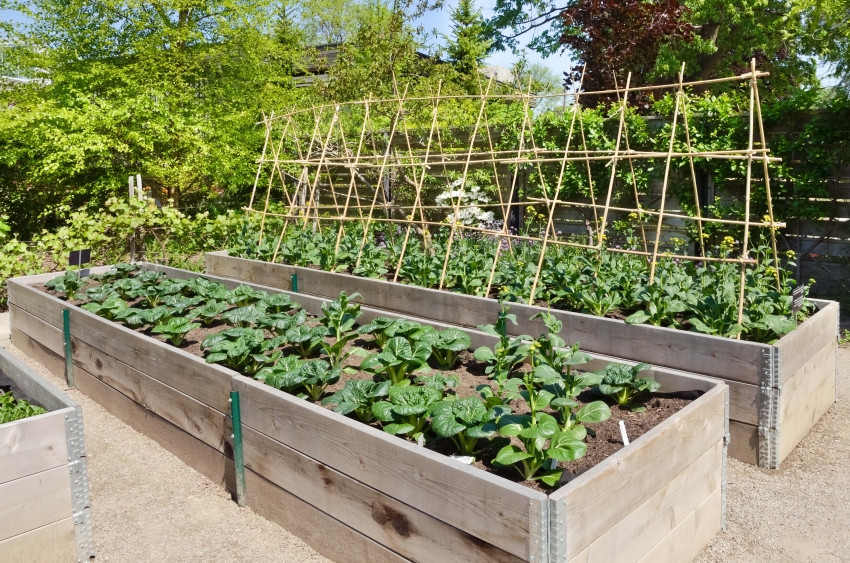
In order to avoid washing out of soil from high beds, it is necessary to pay special attention to the joints when assembling the box
Note!The environmental friendliness of the material allows you not to worry about harmful substances getting into the soil. Wood is much safer than asbestos-cement sheets (slate). Exceptions are boards treated with chemicals to double the life of the material.
Making practical beds from boards: how to make the right choice of material
Summer residents most often create wooden structures based on blanks that they find on the farm. For the manufacture of beds, timber, round timber, slab, lining can be used.
When it comes to purchasing boards in a store, you should pay special attention to the type of wood from which they are made:
- an ash or oak board will last a very long time. Although the cost of such products is quite high;
- the most favorable in terms of price and in terms of processing remains pine board... But this type of wood is highly susceptible to rotting, being in the ground, so its service life is short. Due to impregnation and antiseptic agents, the life of a pine tree can be extended for a couple of years;
- boards made of cedar and larch wood are considered the most suitable material for making boxes. Larch has a natural resin impregnation, thanks to which the product will retain its novelty for many years without the use of additional impregnations.Cedar wood is characterized by a lower resin content, but it is not inferior to larch in terms of durability and at the same time has an affordable price;
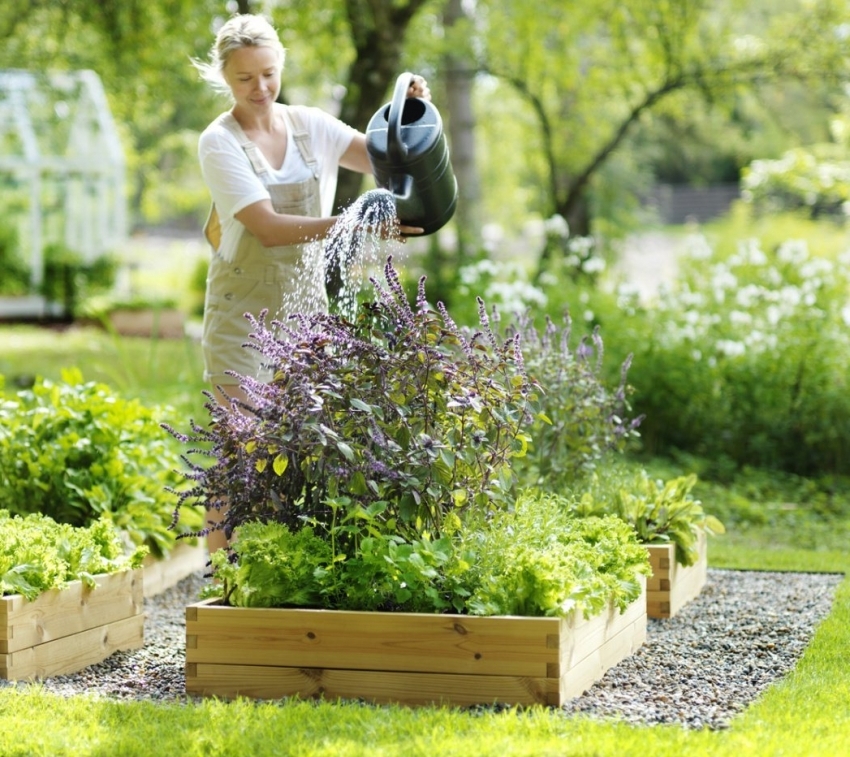
In order for the water not to stagnate in the boxes, it is necessary to consider the drainage system before planting the plants.
- boards made on the basis of acacia feel good in the ground. It should be noted that this type of wood is distinguished by its strength and solid structure, so the process of processing it will be more difficult. To work with acacia, you need a powerful electric tool.
Useful advice!It is not recommended to save on the quality of the material. Bad wood boards are subject to rapid decay. In a few years, holes will appear on the fences of the beds, through which fertile soil will be washed out during rains and watering plants.
Making beds from boards with your own hands: photos, sizes of structures
The boxes are rectangular in shape and are made of boards. The simplest design does not require special knowledge and skills, so any novice summer resident will cope with its manufacture. The main thing is to correctly calculate the dimensions of the boxes.
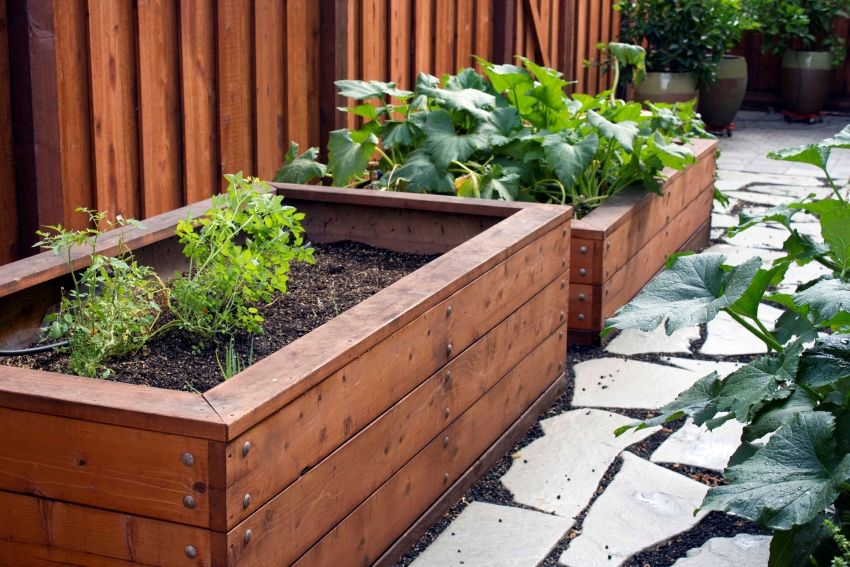
When planting plants, it is necessary to take into account the optimal amount of light and heat for certain crops, since the higher the bed, the faster it heats up
Recommended bed sizes:
- height - many summer residents strive to create the highest possible bumpers. However, this approach is erroneous if the construction of a warm garden bed for cucumbers or other types of crops is not expected, where the height of fences up to 0.7 m is welcomed. The technology of manufacturing such structures requires laying a multi-layer insulation. For ordinary beds, such high fences are not required, it is enough to limit yourself to 0.15-0.2 m. The excessive height of the sides is also unprofitable in economical terms, because they will require a lot of boards to build them. In addition, wood lends itself to deformation changes under the influence of moisture, so there is a risk that over time, high fences will swell and lose their attractive shape;
- width - experienced summer residents recommend choosing a width equal to half the height of a person who will take care of the beds. Most often, this parameter is in the range of 0.9-1.2 m, because in the process of work a person should be able to reach the middle of the structure from the side of the side fence;
- length - this parameter is practically unlimited. Although excessively long structures reduce the level of stiffness of the side rails, it is therefore recommended to choose a length between 4-6 m.
Useful advice!When choosing the dimensional parameters for wooden beds, it should be taken into account that between them it is necessary to organize passages with a width of 0.4-0.6 m.Only after that, the layout of structures on the site is considered.
Creating mixed plantings of vegetables in the garden: photo examples and optimal schemes
The method of combining crops in practice is very effective if the companion plants are selected successfully. Therefore, the owners of the plots count on a special table for the neighborhood of vegetables in the beds before planting. Some types of vegetables have a depressing effect on each other, others can improve the growth and development of neighbors, and provide them with protection from pests.

When planning the beds, it is worth considering that companion plants give a greater yield if they are planted nearby
The correct neighborhood of vegetables in the beds: compatibility table
Many summer residents note that thanks to the proximity of beans as a compaction for the garden bed where potatoes are grown, the number of the Colorado potato beetle is significantly reduced. Marigolds effectively protect cabbage from the white butterfly.Despite this, a certain balance should be adhered to. After all, an excessive amount of marigolds in the garden can drown out the growth of cabbage.
Table of vegetable neighbors in the garden, creating a successful tandem:
| Vegetable name | Plants for a successful combination |
| strawberry | beans, spinach, marigolds, garlic, salad |
| kohlrabi | cucumber, lettuce, onion, beet |
| peas | carrots, corn, cucumber, calendula, eggplant |
| onion | tomato, celery, beetroot, savory, carrot |
| beans | potato, cucumber, tomato, strawberry, eggplant |
| cucumber | radish, pepper, peas, cabbage, beans |
| carrot | lettuce, onion, sage, tomato, peas |
| salad | strawberry, cucumber, carrot, radish |
| pepper | salad, cucumber, beans |
| a tomato | calendula, basil, beans, nasturtium, parsley |
The following pairs of plants are characterized by poor compatibility of planting vegetables in the garden:
- cabbage and strawberries;
- onions and beans;
- carrots and celery, dill, parsley;
- cucumbers and potatoes.
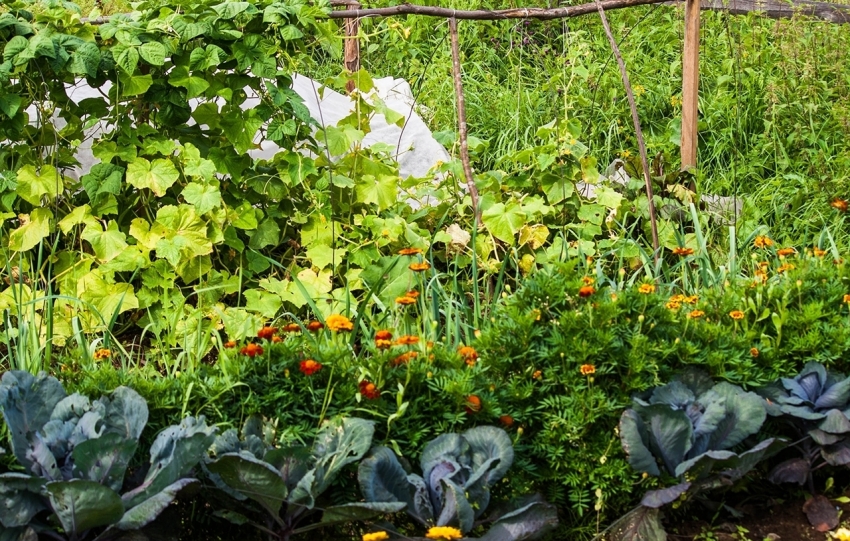
Even in a small area, you can get high yields by using the table of correspondence of neighboring plants when planting
Useful advice!In addition to the main crops, it is recommended to plant spicy and ornamental herbs on the garden bed. Thus, the garden will be not only beautiful, but also useful.
Examples of mixed planting of vegetables in the garden: popular schemes
A good example of vegetable compatibility in the garden is the combination of onions and carrots. As an independent crop, onions are capable of producing about 2.5 kg of yield from 1 m² of the garden. Carrots in the same area give about 6 kg of yield. When these crops are grown together, 9 kg of vegetables can be obtained from 1 m². These plants create protective barriers for each other from pests, so the efficiency of the used area increases.
Of course, when planning a joint cultivation of crops in the garden, you need to group the plants according to their height so that neither of them blocks the light for the other. This is necessary because vegetables can not only have different heights, but also grow at different rates. It is desirable that the seals that are planted additionally be lower in height than the main vegetables. The principle of the multi-tiered neighborhood of vegetables in the beds allows you to create favorable conditions for the root system of crops, and also contributes to the rational use of solar energy.
High yields are collected from the beds where beets and late cabbage are planted. To do this, on an area of 0.8x0.8 m, beets (9 plants) and cabbage (4 bushes) should be planted, not forgetting to fertilize the holes with a glass of compost and a handful of eggshells (pre-grind).
To get an excellent result when planting beans and tomatoes, it is recommended to place the plants in a row with a step of 0.3 m.Along the row with bush beans is installed drip irrigation system so that each plant is at the dropper. Tomatoes are planted in the central part of the garden. As a result, the bean and tomato bushes should be staggered.
Useful advice!It is better to cut the stalks of tomatoes for the winter, and as low as possible. And beans, on the contrary, are recommended to be left intact.
Table of crop rotation of vegetables in the beds by crop groups
The crop rotation of plants can also affect the yield of the beds. If the annual change of crops grown in the same bed is carried out in the correct order, the vegetable garden will produce good yields.
Benefits of correct crop rotation:
- the likelihood of soil fatigue on the site is excluded, since the same vegetable every year picks up the same set of nutrients from the soil and does it from the same depth;
- the spread of diseases and pests that affect plants of the same family is prevented;
- it becomes possible to use fertilizers rationally.
The most primitive way of organizing crop rotation in the garden involves planting plants from different families on the same area every year. The easiest way to divide cultures into four groups is:
- Leafy Crops - These include various types of kale, green onions, lettuce, and spinach.
- Fruit vegetables - cucumbers, tomatoes, eggplants, peppers, pumpkin.
- Legumes - beans, chickpeas, peas.
- Root crops - potatoes, beets, radishes, carrots.
Table of the simplest crop rotation in the garden:
| Landing order by year | Recommended crops for planting | |||
| 1st bed | 2nd bed | 3rd bed | 4th bed | |
| 1 year | fruit | roots | legumes | leafy |
| 2 year | roots | legumes | leafy | fruit |
| 3 year | legumes | leafy | fruit | roots |
Arrangement of beds for cucumbers in the open field: photos and recommendations
For growing cucumbers outdoors, the beds are usually prepared in the fall. This should be done before the onset of rains and drops in temperature. The planting zone must be carefully dug up and saturated with organic fertilizers. Cucumbers like fertile light soil that has a good level of air and water permeability. If the soil on the site is heavy, sawdust, peat or sand can be added to the soil to facilitate loosening.
Useful advice! To get a rich harvest, it is recommended to add a tablespoon of superphosphate and a glass of ash per 1 m² of area. Dolomite flour can be used instead of ash.
The process of preparing a garden bed for cucumbers in the spring includes a soil disinfection procedure. For this, the place of the future garden is spilled with potassium permanganate. The solution must be hot and strong. In addition, soil fertility can be increased by introducing chicken droppings or manure. This procedure is carried out locally, that is, the fertilizer is placed directly into a trench or hole. After that, the bed is covered with a small layer of soil, where the seeds are then planted.
How to make a garden for cucumbers: agricultural secrets
To get a rich harvest of cucumbers from the garden, you must adhere to the basic rules:
- There should be no irrigation canals, streams and flowing water bodies near the beds.
- If the planting zone does not have protection, it is better to place the garden in a quiet place where there are no drafts.
- Procedures such as watering and loosening the soil should be done on a regular basis. Otherwise, a hard crust will form on the surface, and the bed will dry out very much.
- Open field cucumbers need to be fed much more often than indoor plantings.
- During harvesting, it is not recommended to change the position of the plant's lashes or turn them over.
- Weeding plants in open beds should be done more frequently than indoors.
- It is recommended to cover the entire surface of the bed with a black film.
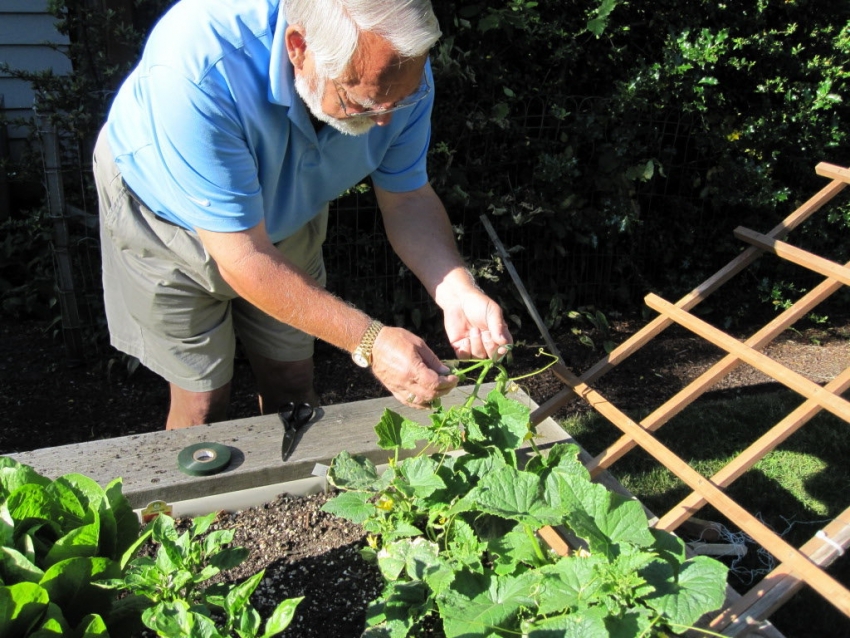
In order to collect clean cucumbers without soil, you need to think about what you can tie up long shoots
Cucumbers need a rich biological composition of the soil. Therefore, it is recommended to fertilize the land with organic matter, for example, grass, humus, branches, rotted manure, food waste. In the process of their decomposition, not only the fertility of the soil increases, but also heat is released, warming the soil. So that the high temperature does not damage the root system of cucumbers, experienced summer residents are advised to carry out abundant watering.
Interesting fact!Sometimes the decomposition of organic fertilizers occurs so actively that the soil in the garden warms up to 80 ° C.Under the influence of such a high temperature, many pests, viruses and pathogenic fungi contained in the earth die. The result is natural soil sterilization.
There are several ways to grow cucumbers outdoors. For these purposes, you can form a long ridge-bed, a hole, dig a ditch, or build a high structure.
How to make cucumber beds with a bookmark in the garden
To form a bed with a bookmark, you will need to dig a trench. The depth of the ditch should be equal to two shovels. Then branches are laid out across and sawdust is poured. The next layer consists of straw and garden waste. You can add autumn leaves, cardboard or newspaper, compost. The thickness of the fertilizer layer should be within 5-7 cm. The bookmark is filled with warm water and covered with a mixture of compost and earth.
A bed with a bookmark can effectively serve for 5 years. In the second year of operation, it is not necessary to add compost to the top layer, because during the decomposition of organic components, the bed itself will develop nutrients.
Advantages of a bed for growing cucumbers with a bookmark:
- convenient watering system;
- stagnation of water is excluded;
- in the spring there is no need to dig up the soil, it is enough to loosen the soil.
Plants can be planted on such a nutrient base much earlier than it is customary to do in ordinary beds. It is not recommended to use beds with a bookmark in low-lying areas and areas where water stagnates.
Warm surface beds for cucumbers in the open field
This type of warm beds for growing cucumbers is built on the surface of the prepared soil. This technology will be the best option for areas located in the lowlands. In order to enhance the heating process, the bed is covered with a film. As a result, a greenhouse effect is formed, which has a positive effect on the growth of cucumbers and their yield.
Surface beds also include structures in the form of boxes made of bricks, slate or boards. The bottom of these containers is covered with sand, then wood waste. Next comes the layer of organic waste and straw. After placing each component, the contents are carefully compacted and filled with liquid manure. Finally, the bed is covered with a mixture consisting of compost and soil.
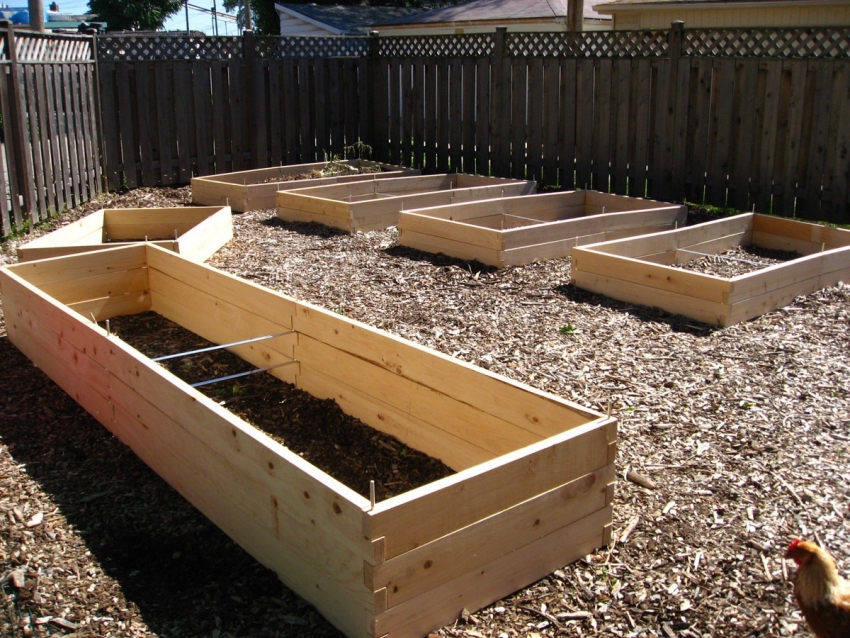
When making warm beds for cucumbers, you should follow clear instructions so as not to oversaturate the soil with fertilizers
Useful advice! As organic waste can be used skins of vegetables and fruits, fallen leaves, eggshells (crushed into powder).
Planting of cucumbers is carried out in two rows. Plants are placed along the edges of the bed-box, which ensures a sufficient level of light. If it is planned to plant cucumbers in early spring, the structures can be converted into greenhouses. To do this, you will need to install plastic arcs and stretch plastic wrap over them. Thus, heating is intensified and an early harvest becomes possible. Moreover, the result is completely independent of weather conditions.
Raised beds for cucumbers in the open field
Warm beds with a raised structure are used when the site is located in a region with a cold and humid climate. Due to this, the soil is fully warmed up, which makes it possible to achieve a harvest in the early stages. If the groundwater is too close to the garden, the bed rises high, due to which the plantings do not get wet on the soil oversaturated with moisture.Stone fruit trees are planted in a similar way, whose roots are greatly affected by groundwater.
Various materials are used as borders for these structures. The most popular of these are slate and timber. In rare cases, metal is used. This type of bed can be installed even in the middle of a lawn. If you make a frame in the form of paving stones or tiles, a raised vegetable garden with cucumbers will become a worthy decoration of a summer cottage.
As an alternative solution, it is possible to build a fill mound on the territory that does not have a fence. You can take any length for such a bed, the optimal width parameter is 1 m.Do not raise the ornamental garden to a height of more than 1 m. The air that remains in the voids formed between the elements of large organic matter provides good ventilation and contributes to the rapid heating of the soil.
To speed up the process of decomposition of fertilizers, the soil is spilled with a solution saturated with special bacteria. The procedure is carried out twice a year. The first time the soil is watered with bacteria in the spring. Wait at least a week before planting plants after treating the garden. The second soil spill is done in the fall after the harvest has been harvested. When the soil has already been treated with the composition, it should be loosened so that the soil is saturated with oxygen, and the preparation itself is evenly distributed.
